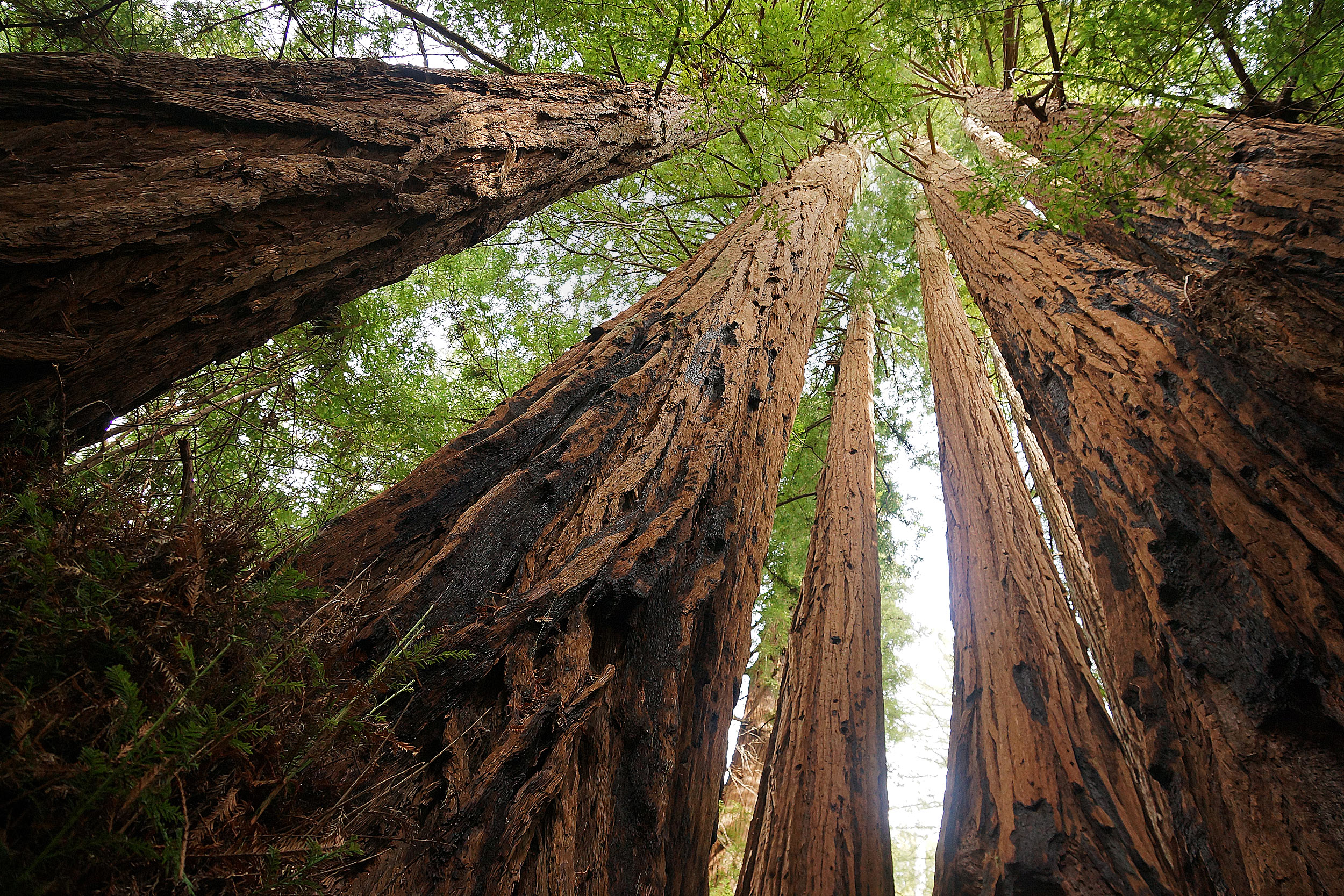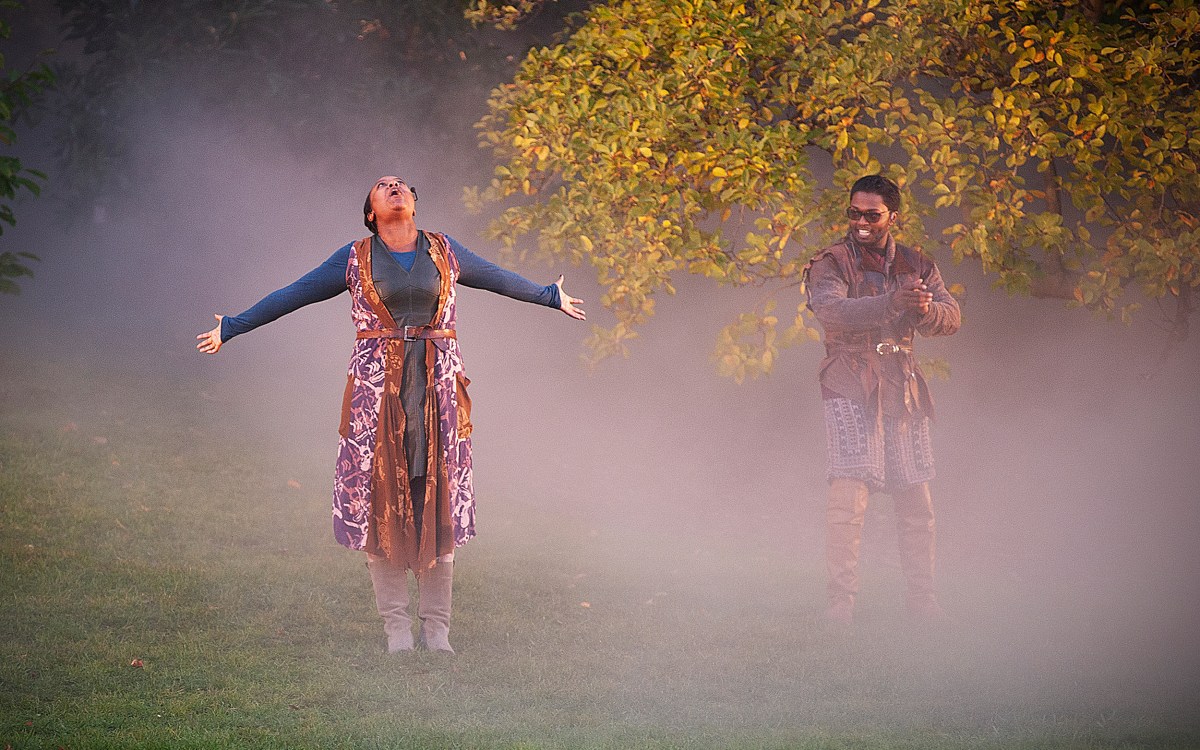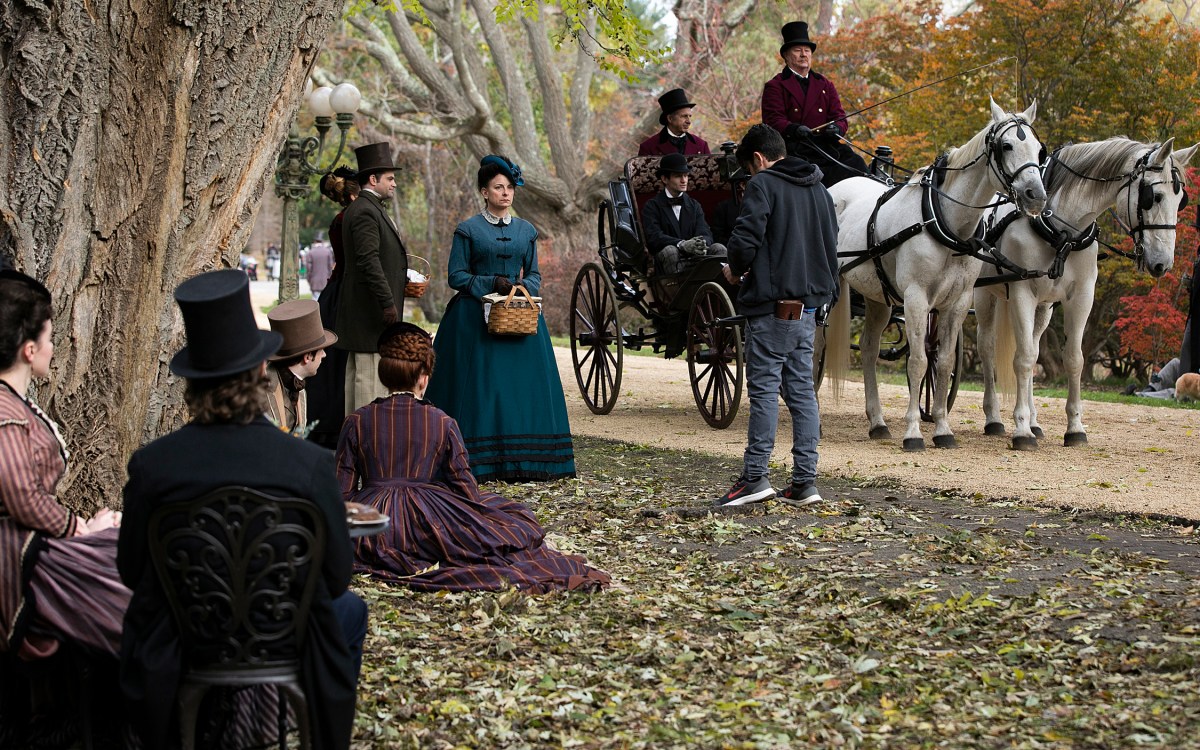Seeing the forest for the trees

Redwoods can grow more than 300 feet tall and can live for more than 1,000 years.
Creative Commons
National Book Award winner Richard Powers discusses how writing his latest novel affected his view of humans and nature
Novelist Richard Powers’ latest book, “The Overstory,” entwines the tales of human characters with those of the trees on which society depends — and has always depended — for timber, for food, for shade, for beauty.
The National Book Award and MacArthur “genius grant” winner’s book explores the importance of individual trees in the everyday and spiritual lives of a group of ordinary people, as well as the broader impact of logging practices, particularly those aimed at old-growth forests.
Powers will be visiting Harvard later this month, appearing March 25 at the Arnold Arboretum with Arboretum Director William Friedman and Robin Wall Kimmerer, a professor in the department of environmental and forest biology at the State University of New York, Syracuse. The next day, he’ll appear with Kimmerer and Harvard Divinity School writer-in-residence Terry Tempest Williams at an event hosted by Harvard’s Mahindra Humanities Center.
Powers, who was born in Illinois and worked in Boston as a computer programmer before experiencing literary success, spoke to the Gazette about the book and the impact that researching and writing it had on his own view of the relationship between humans and nature.
Q&A
Richard Powers
GAZETTE: Let’s jump right in with “The Overstory.” It seems an unusual combination of characters, with trees playing a prominent role. What gave you the idea for it?
POWERS: I had kind of a “religious conversion moment” when I was teaching at Stanford and in Silicon Valley. I was hiking in the Santa Cruz Mountains above Palo Alto. I did that with some frequency in the redwood forests up there, and one day I came across a remnant tree that had escaped the logging of those mountains. It put in perspective for me the difference between a second-growth forest and old-growth.
This tree was 30 feet wide and 300 feet tall and almost as old as Christianity. It was just so mind-boggling to think that those mountains had been filled with trees on that scale and of that age, prior to being cut down to build San Francisco — twice — and to build Palo Alto, and to build the railroad that Leland Stanford had used to complete the transcontinental railroad.
In that sense, [those trees were] responsible for that whole area, and the university, and all the tech spinoffs that came out of Stanford. It occurred to me that there was a relationship between trees and people, between the ways that trees had enabled humans to make what they had made and a kind of amnesia on the part of human culture that just assumed that these creatures were there simply for resources and our dominion. And when you see a tree of that age, it challenges that assumption.
I thought, that’s a story I’d never seen, this relationship between people and trees, in literary fiction. And it put the human adventure in a different context for me.
GAZETTE: Tell me a little bit more about that forest. You said it has been logged at least twice. How did the second- or third-growth trees compare to that lone giant?
POWERS: This was part of the force of that revelation. I was up walking under these redwoods without a historical sense of how old they were and the legacy of that forest. It never occurred to me that they looked any [different] than the way they would have looked when white people first got there to the region. A redwood can do a lot in 100 years, I mean, that’s a fast-growing tree. And it’s an impressive tree.
GAZETTE: So they were already plenty big.
POWERS: That’s right. And in that second-growth forest, it’s hard not to feel that you’re in a kind of massive outdoor cathedral. I mean those straight, incredible, girthy trunks just go straight up without a lateral branch for a long time. And you’re walking, feeling a sense of reverence and awe, and suddenly you realize you don’t even have a clue as to what scale they can operate on. That was the power of it.
When I came back down from the mountains and began to read, I discovered that 98 percent of the old-growth redwood range had been logged, which is very similar to the figure for old-growth forest of any kind in the United States — somewhere between 95 and 98 percent. It just stunned me.
And when I came back east after that experience, in search of the last remnant of eastern old-growth forests — a search that ultimately took me to my present home in the Smoky Mountains — I was once again startled to see that I had never actually seen what a healthy, intact, functioning eastern forest looked like.
GAZETTE: How different are those old-growth forests here in the east from the second- and third-growth?
POWERS: When I hiked up through the regrowth into the old growth, it was as clear as anything you’re ever going to see. You don’t have to be literate in trees to feel that difference. It looks different. It smells different. It sounds different. It’s immediately obvious there’s a huge upwell in species count. It’s stunning how much more complex the webs are up there than they are in the second growth.
You’ll see people speculate about how long it would take to return to that level of interconnection, to that quantity of species count, to that richness and reciprocity and robustness that you see in a mature, uncut forest. And all of those guesses, whether it’s 300 years or 500 years or 1,000 years, are simply that, they’re guesses, because we’ve never seen it.
The base of a coast redwood sequoia, growing in California’s Big Basin Redwoods State Park.
Creative Commons

GAZETTE: You talk in some depth about a variety of different tree species in the book, and it sounds like you did a fair amount of hiking before it came out. Were you paying attention to the trees then or did you have to give yourself an education?
POWERS: I was a tree-illiterate until the age of 55. I liked them. I could appreciate them aesthetically. Now and then I could marvel at a particularly grand individual, but I could not identify a tree. I was oblivious to the difference between a sycamore and a maple or a tulip poplar and a sycamore. They were all just up there and I was down here.
That changed so dramatically in the course of the five, six years that I worked on this book. And it so hugely enriched my life, beyond what’s happened with the book. It’s made me immensely aware of what I don’t see. And it has made this task of simply being present to living things that aren’t human so much more central to my life.
GAZETTE: How important is it to you to get the science right? How much research did “The Overstory” take?
POWERS: I ended up reading more than 120 book-length studies on trees and a great deal of magazine articles and journal articles and web publications. I supposed it qualifies [as research], but it was also just sheer pleasure. It wasn’t work at all. In fact, I’ve continued to do it now, even a year after publication of the book.
How important was it to me to get the science right? I would say as important as I think it is for our culture to get the science right and to understand the science, because it’s only through that kind of rigorous, close, and controlled observation that we can have any idea at all of what our impact on these systems is and what the likely consequences for us will be.
GAZETTE: I read in your bio that you worked in Boston as a computer programmer. When was that, and what was that like?
POWERS: I went out [to Boston] in 1979 and I left in 1984, so just around four-and-a-half, five years. I lived in two different places. I initially lived right on the Somerville-Cambridge line and worked downtown, at Lewis Wharf, for a data-processing operation. And I later lived in the Fens just behind the fine art museum, the MFA, and that’s where I started my first book. In fact, my first book is partially set in that area and has to do with somebody who was in a position very much like me, working in data processing. Those years were incredibly formative to me.
I loved the city and I loved being young in a place that was so geared toward technology and toward science and toward education. And it was just an exciting place to rediscover my own possibilities to move from this one way of making a living to leaping off the cliff and deciding to try to become a writer.
All of that happened in Boston for me. So while I wasn’t there for a huge part of my life, it looms large in my psyche as a salient, significant place for me, as a kind of landmark where I really first got going.
GAZETTE: “The Overstory” is certainly raising awareness of forests for people. Are there other endangered parts of the natural world that you are setting your sights on to give a similar treatment?
POWERS: What I would hope for “The Overstory,” even more, perhaps, than an awareness of the vanishing old-growth forest, is the need for a changing consciousness on the part of people with regard to the nonhuman world. Really what the book is about is how very, very wrong we are to think that we’re autonomous, and to pursue a style of life that’s predicated on the belief in human exceptionalism.
The book really is about this idea we have to live here on this planet within the cycles of life that this planet has created. And while our technologies do give us great leverage and great ability to influence matter and time, they don’t exempt us from accountability and they don’t give us license to pretend that we’re not dependent on the nonhuman world.
This is a book about people who begin, like most of us, thinking that we have won this victory over nature, and who have that belief challenged and have to come to the realization that we can’t go on living here without trees. Trees, on the other hand, would be perfectly capable of carrying on in the absence of humans.
This Q&A has been edited for length and clarity.








